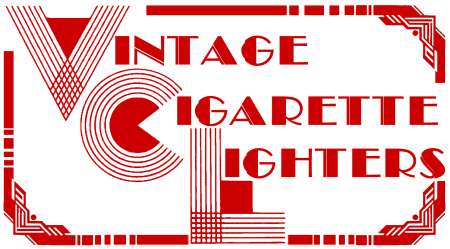|
Lighters are mechanical inventions which generally create a flame. Most of the vintage lighters we know of were designed and invented for the purpose of manufacturing and selling them for profit. The history of lighters can be well documented thru the thousands of patents granted to their inventors. The history of patents is long and cumbersome but important to understanding the development of lighters. This provides both a brief history and description of patents for your understanding:
The word patent is derived from Latin meaning “an open letter”. The modern concept of the patent was established in England (based on an informal system from renaissance Italy) in 1449 when King Henry VI awarded a 20 year patent (open letters marked with a king's seal showed proof of ownership) to John of Utynam for stained glass manufacturing. It established the notion of a state grated limited monopoly.
Royal patents were often granted for trade and manufacturers including inventions. The English monarchy clearly recognized the value of protecting certain arts and industries.
In the USA the patent office represented an early form of federal support for science. This support enabled scientists, inventors, and entrepreneurs to secure property rights for their innovations. Many of the original 13 colonies had some form of patent law based on the English system but it was Thomas Jefferson (among others) who influenced the development of the first national patent system. The U.S. constitution along with other legislative acts of the 1700s-1800s helped promote the necessary environment for scientists and inventors to protect and market their creations.
A major result of the marketability of intellectual property was the development and growth of the American corporation beginning in the mid-1800s. The patent act of 1836 maintained the life of a patent for 14 years and allowed an extension for 7 more years with approval of the commissioner. With legislation passed, patent holders could exploit the marketplace and many people became very wealthy from royalties derived from their inventions. Famous examples are: Samuel Morse's code-patent in 1840; Charles Goodyear's vulcanized rubber in 1844; Alexander Graham Bell's telephone in 1876.
The development of a patent system in the USA provided the stimulus to foster an environment of rapid technological advancement. The legal treatment of patents as property, no different from real estate, provided the groundwork required for the creation of large powerful corporations. The system created in 1836 remains largely intact today with few minor adjustments.
Currently, U.S. patents are overseen by the us patent and trademark office in Washington, D.C.
There are three kinds of patents:
- utility patents granted for new and useful process, machine, manufacture, composition of matter, or useful improvement thereof
- plant patents for new varieties
- design patents granted on any new, original, ornamental design for article of manufacture.
Other industrialized countries including: U.K, France, Austria, Germany, and Switzerland also realized the importance of developing new technologies and offered its citizen inventors exclusive rights to their creations as well. These foreign patents, together with U.S. patents, can tell us the complete history of lighter development.
|

